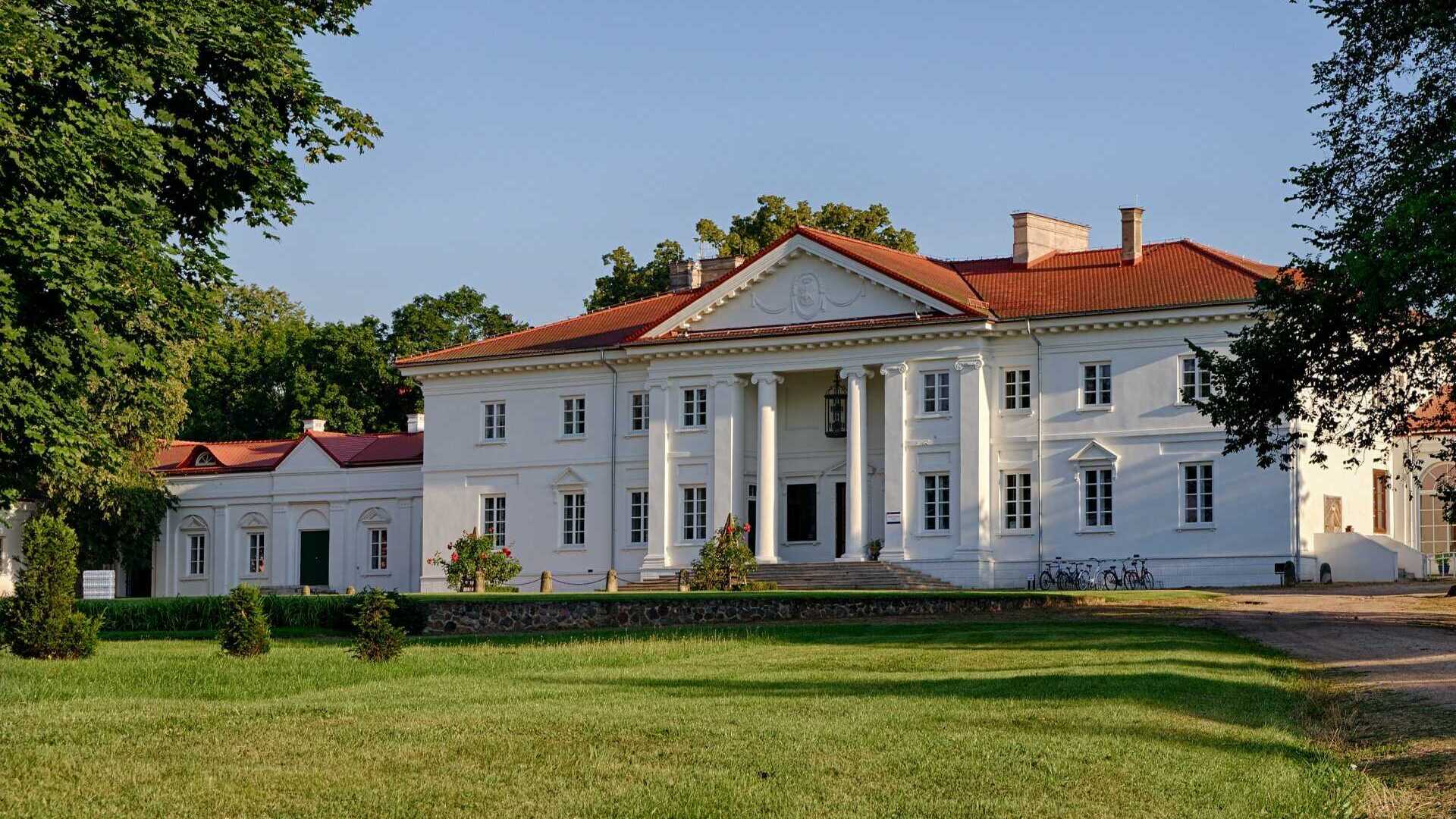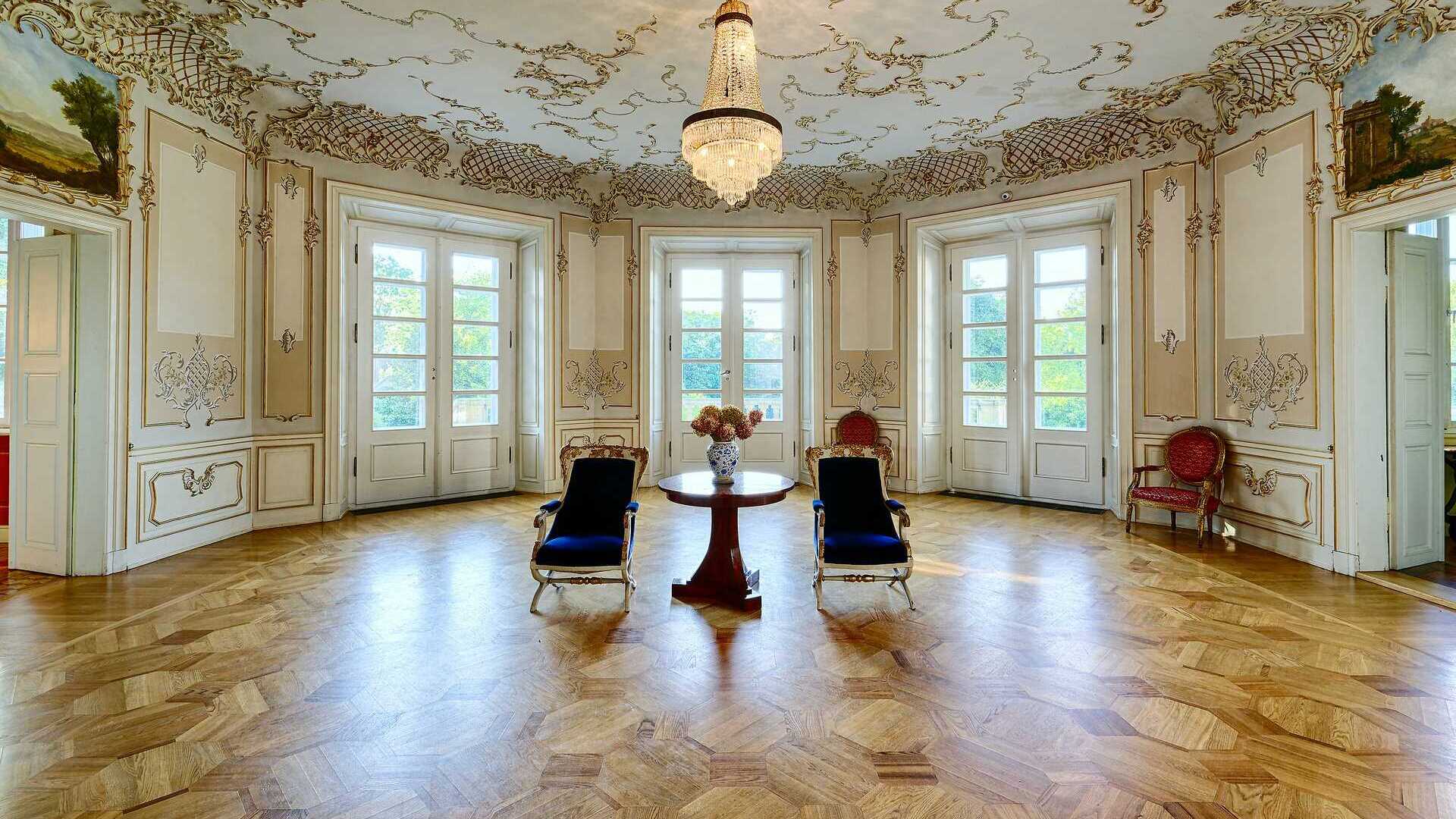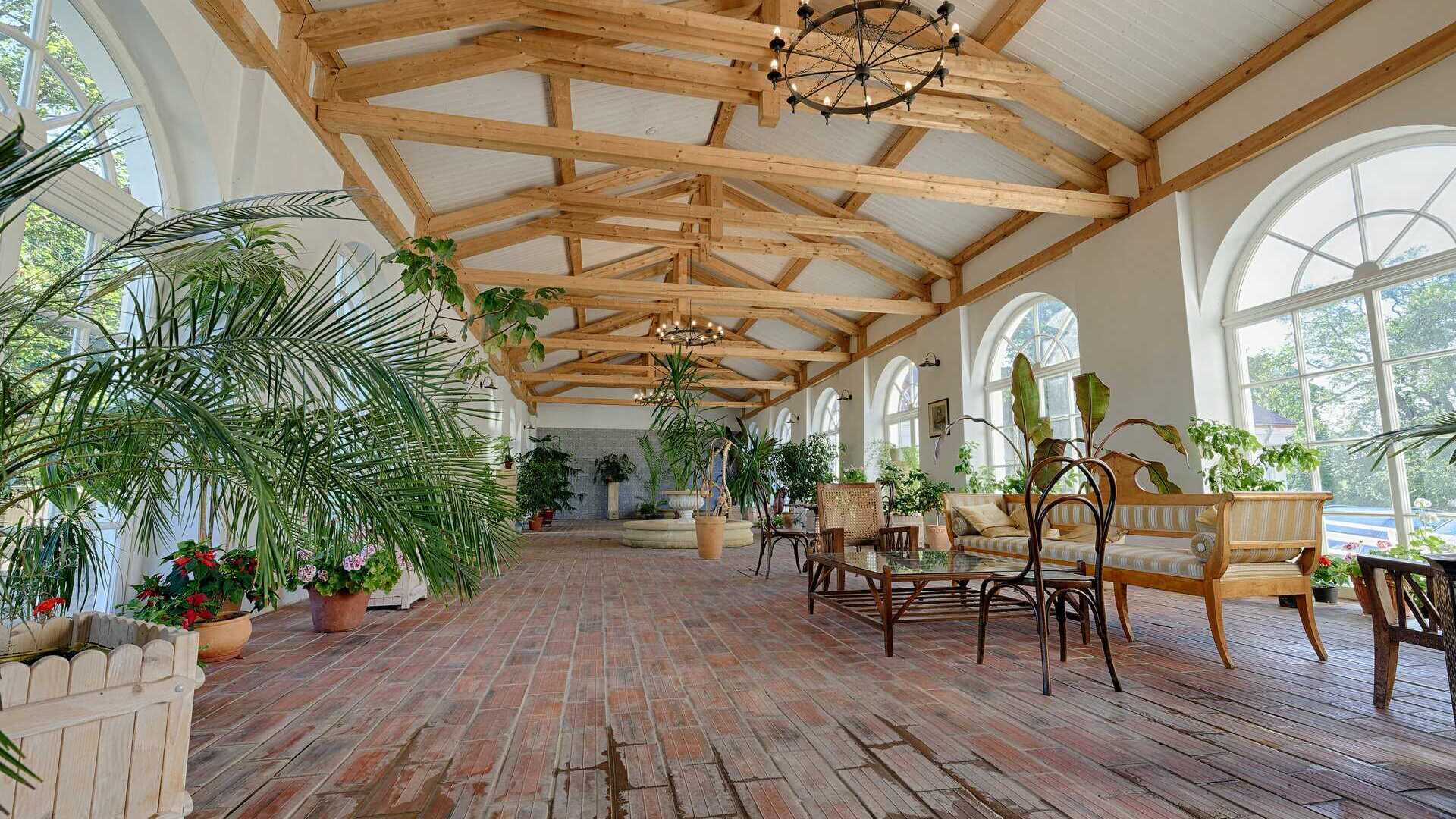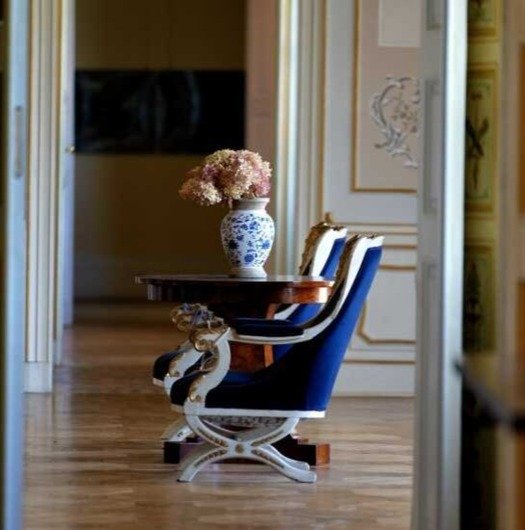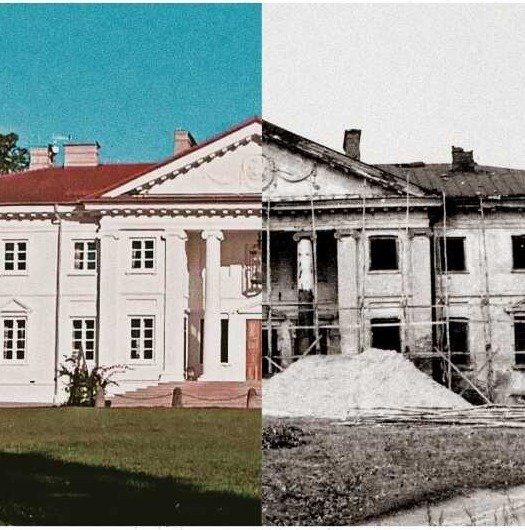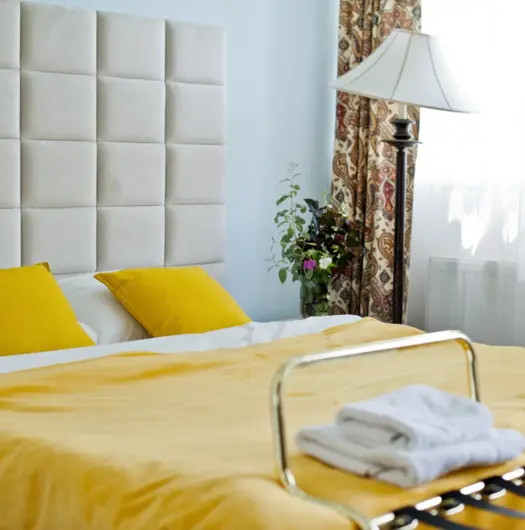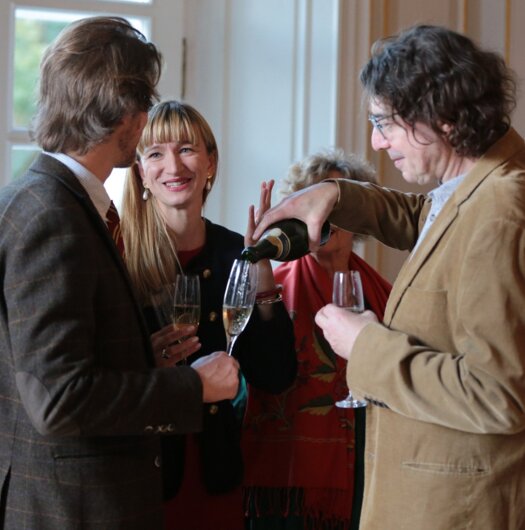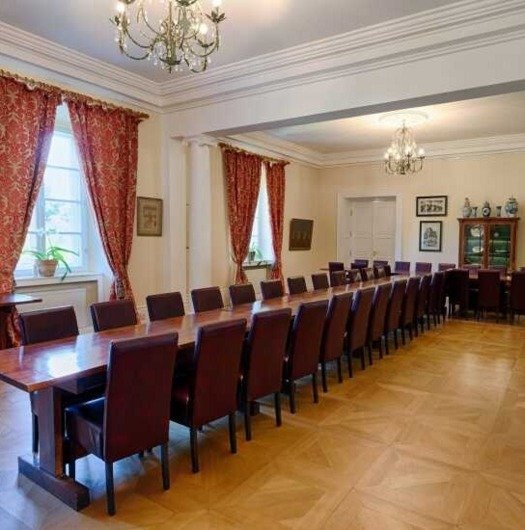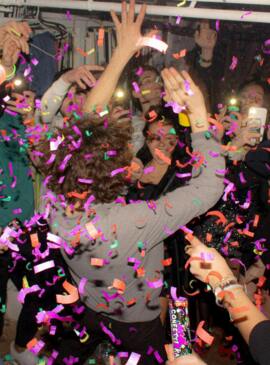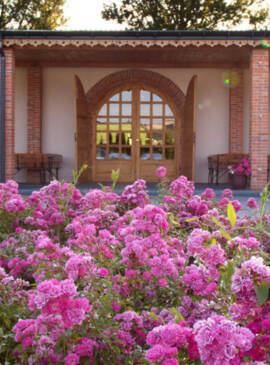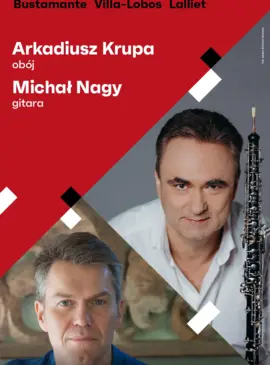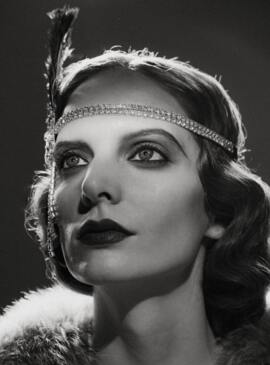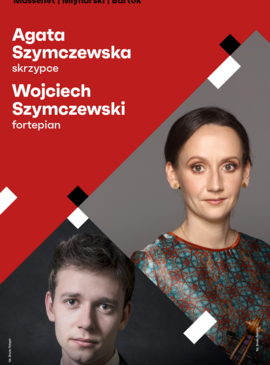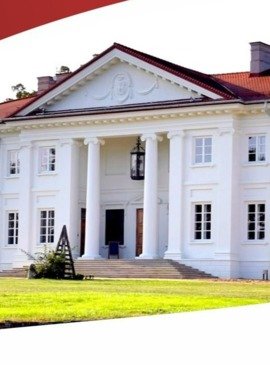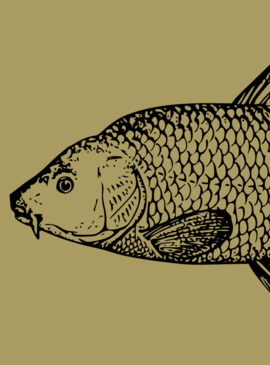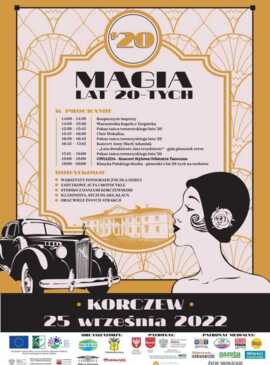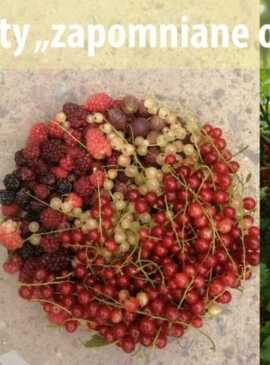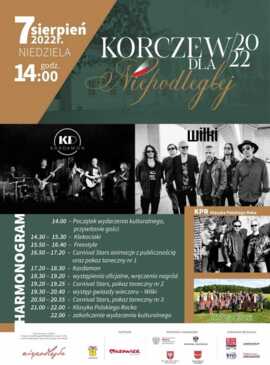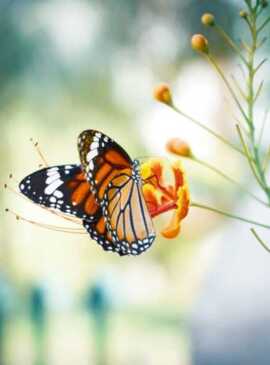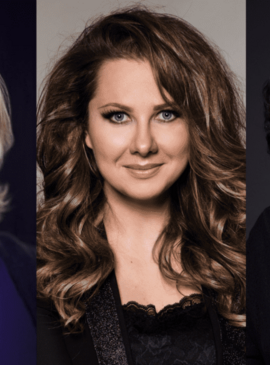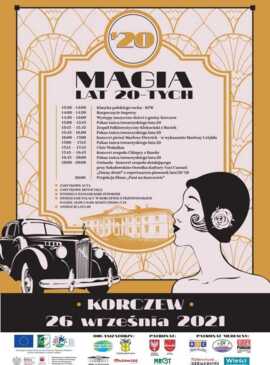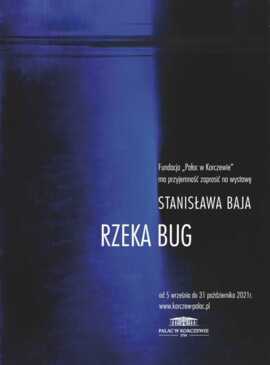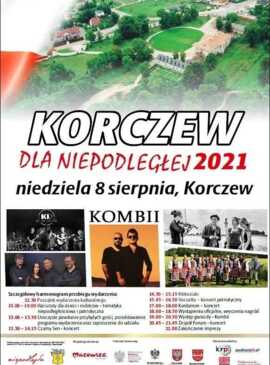VISIT KORCZEW PALACE
Korczew Palace is a place for lovers of history, nature and culture. For over 30 years, the Ostrowski-Harris family has been renovating the palace after years of disrepair to serve as a museum and local cultural centre. The Palace is surrounded by a historic English park full of interesting specimens. It houses an orchard with traditional varieties of fruit trees, a collection of historical roses and a romantic summer villa called Siberia.
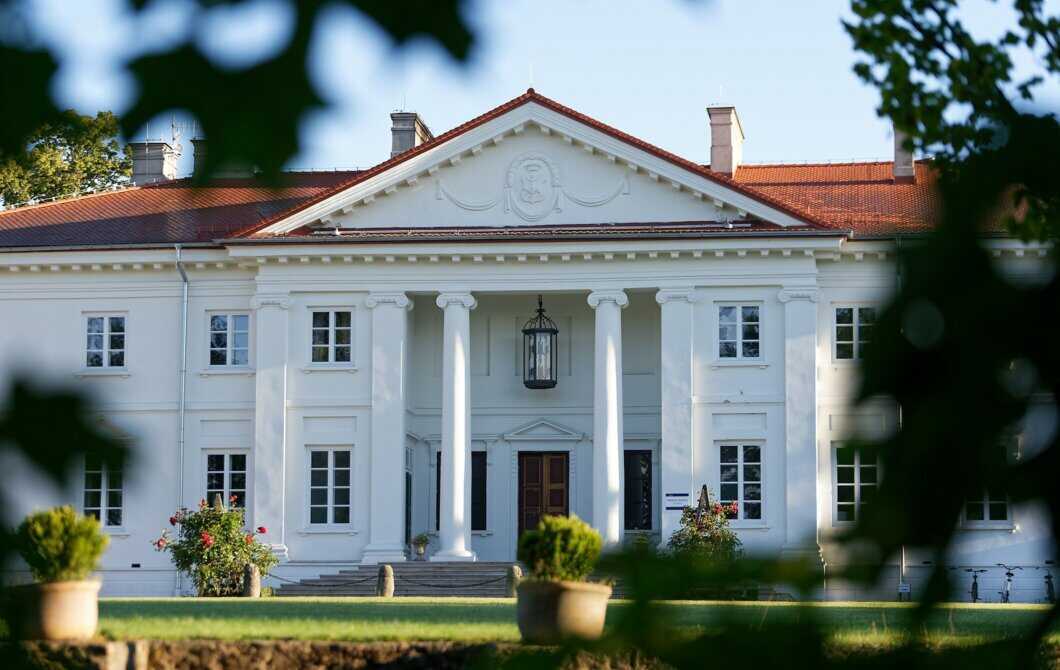
OPENING HOURS
The Palace
Renovation - closed until further notice
Rooms
Check-in: from 3:00 pm
Check-out: untill 11:00 am
Restaurant
Wed.- Sun.: 1:00 pm - 7:00 pm
Zanurz się w historii i tradycji regionu
Pałac w Korczewie jeszcze niedawno był w ruinie, a dziś zachwyca swoją bogatą historią i tradycją. Odwiedzając pałac, można odkrywać fascynujące opowieści związane z jego mieszkańcami oraz ważne wydarzenia, które miały tu miejsce. W pałacu odbywają się również liczne wystawy i wydarzenia kulturalne, które pozwalają na bliższe poznanie bogactwa regionalnej kultury i sztuki. Wystawy malarstwa, koncerty i festiwale organizowane w pałacu i parku stanowią doskonałą okazję do spędzenia czasu w inspirującym otoczeniu. Szczególnie warto odwiedzić coroczne imprezy takie jak Zielony Korczew, gdzie można skosztować regionalnych potraw i poznać lokalne rzemiosło czy Magię Lat 20-tych.
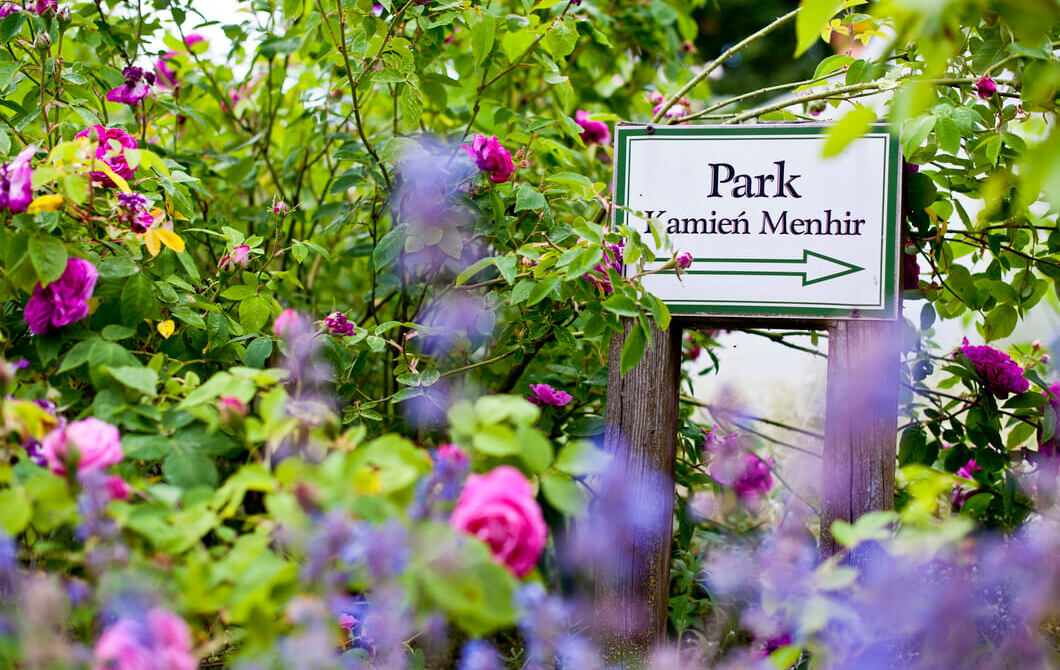
Świętuj ważne wydarzenia w bajkowej scenerii
Pałac w Korczewie to idealne miejsce na organizację wyjątkowych uroczystości w otoczeniu zabytkowych wnętrz i malowniczej przyrody. Nasze obiekty w Korczewie oferują doskonałe warunki do świętowania chrzcin, komunii, urodzin, wesel oraz innych imprez okolicznościowych. W zależności od potrzeb i liczby gości, możemy zaproponować kameralną salę restauracyjną w Kuźni Pałacowej, która pomieści do 25 osób lub większe przestrzenie w pałacyku letnim Syberia oraz sali weselnej Pod Arkadami. Nasza sala konferencyjna jest doskonale wyposażona i funkcjonalna, co czyni ją idealnym miejscem na organizację spotkań biznesowych i konferencji.
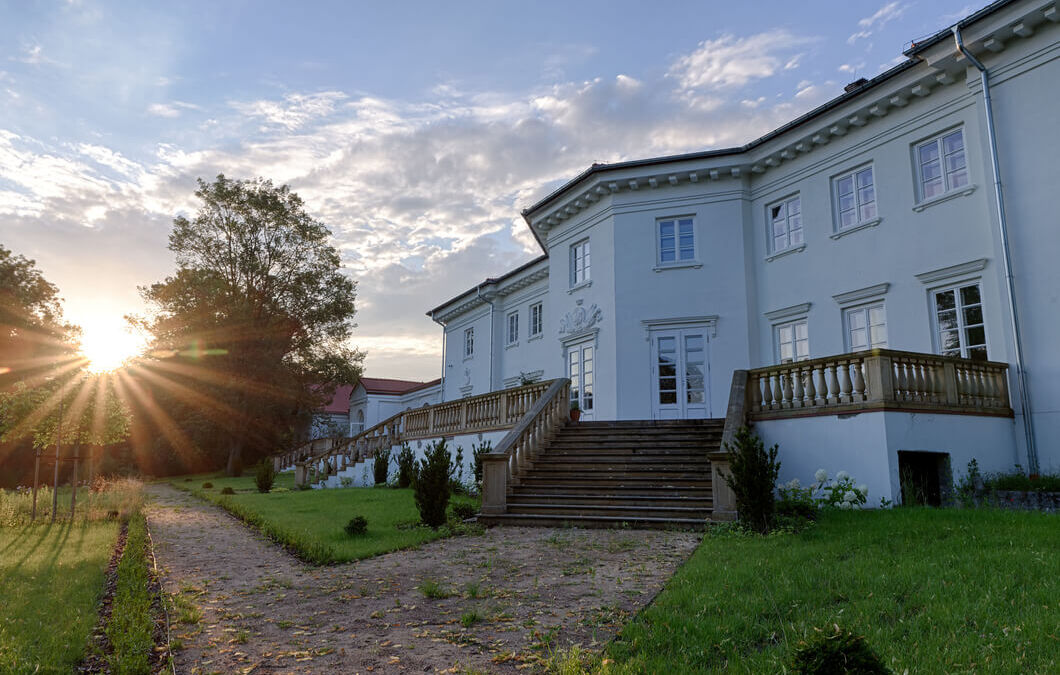
Odpocznij wśród malowniczej scenerii
Turystów do Korczewa przyciąga nie tylko fascynującą historia i architektura pałacu. Wieś Korczew jest warta odwiedzin również ze względu na otaczającą ją przyrodę. Ta niewielka miejscowość położona w sercu Nadbużańskiego Parku Krajobrazowego oferuje niezwykłe możliwości obcowania z naturą. Korczew pozwala wziąć oddech od szybkiego tempa życia w Warszawie czy Białymstoku i spojrzeć na Mazowsze z innej perspektywy. Zaledwie kilka kilometrów dzieli go od malowniczej rzeki Bug, której otoczenie przyciąga miłośników przyrody swoim urokiem i różnorodnością.
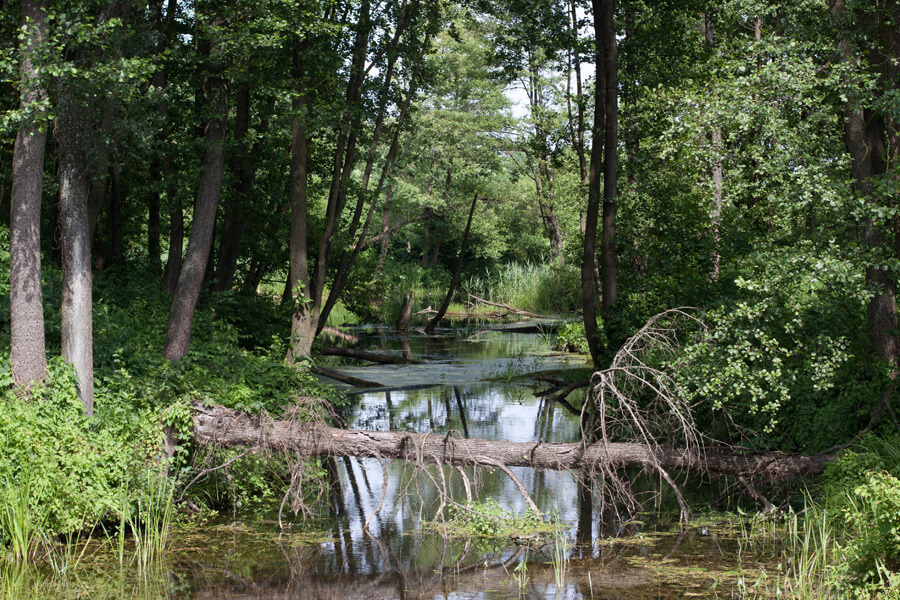
Zarezerwuj pokój w Kuźni Pałacowej
Kuźnia Pałacowa to wyjątkowy obiekt noclegowy położony tuż przy pałacu, oferujący komfortowe pokoje w budynku z XIX wieku. Nasze pokoje są przytulne i elegancko urządzone, a goście mogą liczyć na najwyższy standard obsługi. W restauracji znajdującej się w tym samym budynku serwujemy wyśmienite dania inspirowane lokalnymi przepisami. Jest to doskonałe miejsce na relaks i odpoczynek po dniu pełnym zwiedzania i atrakcji.
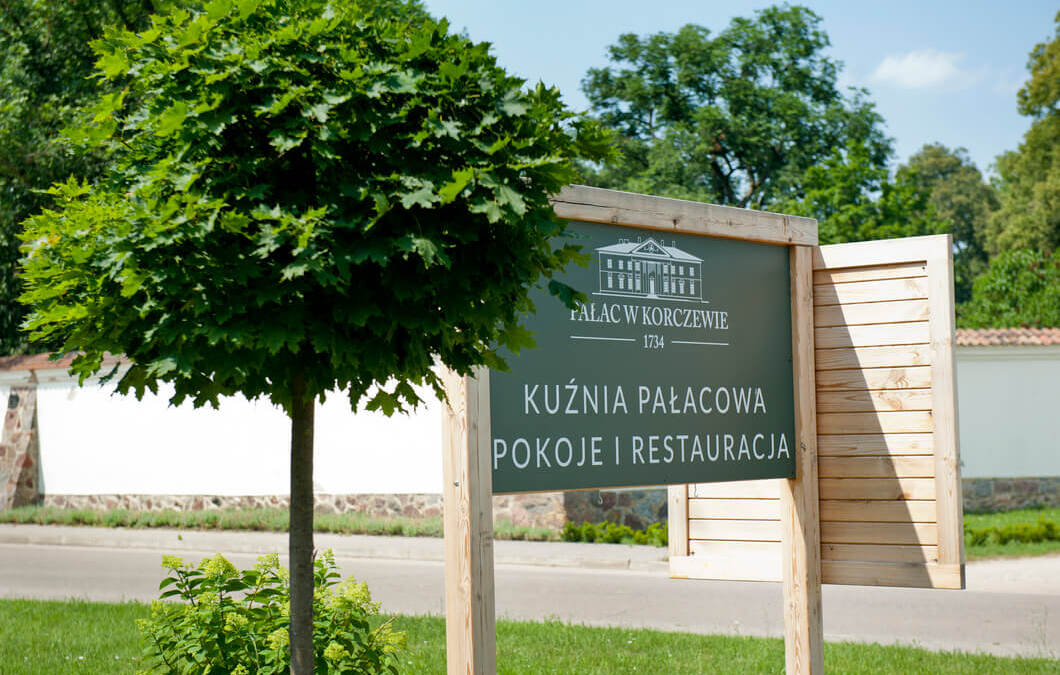
Oferta dla biznesu
Zespół pałacowy w Korczewie to idealne miejsce na organizację wydarzeń biznesowych, takich jak konferencje, szkolenia, warsztaty czy wyjazdy integracyjne. Dysponujemy nowoczesną salą konferencyjną w pałacyku Syberia oraz profesjonalną obsługą, która zadba o każdy detal. Catering zapewnia nasza restauracja w Kuźni Pałacowej. Gwarantujemy najwyższą jakość posiłków. Dodatkowo oferujemy zakwaterowanie w wygodnych pokojach, co sprawia, że nasz obiekt jest doskonałym wyborem na każdą biznesową imprezę.
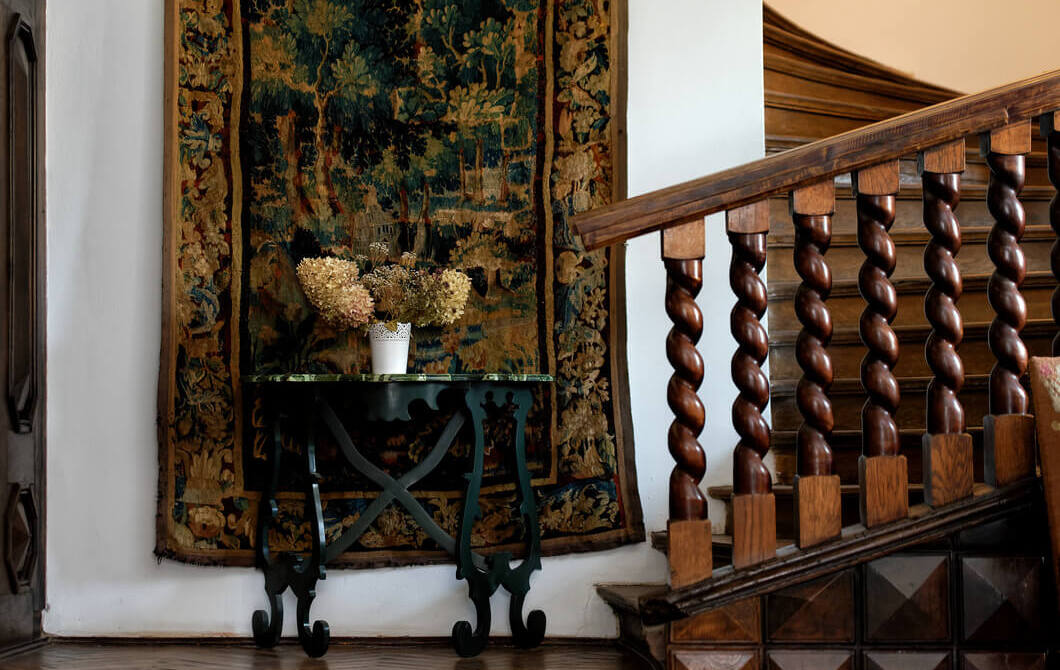
OUR LOCATION
Korczew is located in the picturesque Nadbużański Landscape Park, 6 km from the Bug River. The nearest town is Siedlce, 32 km from Korczew. The drive from Warsaw and Bialystok takes about 1 hour and 45 minutes.

